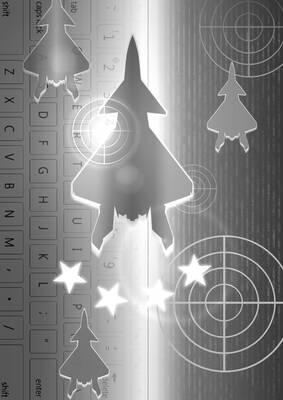North Koreans relish the element of surprise when they get to choose the stage and command the theatrics. Last week, the unexpected visit of three top leaders of the Democratic People’s Republic of Korea (DPRK) to the closing ceremony of the Asian Games in Incheon stole the show from the athletes.
The three visitors — vice chairman of the National Defense Commission Hwang Pyong-so, and two other senior officials from the Korean Workers’ Party, Choe Ryong-hae and Kim Yang-gon — met with South Korean Prime Minister Jung Hong-won, national security adviser to the president Kim Kwan-jin and Unification Minister Lee Jae-joung. It was a rather merry occasion, with leaders on both sides promising to meet again next month and offering smiles and handshakes for the cameras.
Korea observers are wondering what this means for the future of the inter-Korean relationship. Is Pyongyang trying to send a message to South Korea, the US and China? Are the six-party talks on North Korea’s nuclear program, which have been defunct since 2009, set to resume?
The clearest answer is that there is no clear answer. In recent months, North Korea has been exploring new diplomatic territory, with high-level officials engaging Europe, Japan and the UN General Assembly in New York.
Last week, the DPRK mission to the UN even responded to a highly critical human rights report by acknowledging the existence of its labor camps — which it defended as a means of “re-education” and “reform.”
North Korea has been far less forthcoming about its intentions. It remains to be seen whether it seeks to engage the rest of the world in a constructive and sustained manner, or whether DPRK officials and diplomats are merely putting a good face forward to divert international attention from their nation’s reputation as a nuclear weapons proliferator and human rights violator.
Indeed, the visit to Incheon comes within a context of mixed messages. Two days before the North Korean delegation arrived, the Committee for the Peaceful Reunification of Korea — officially part of the Korean Workers’ Party — denounced the “South Korean puppet forces for seriously violating the North-South joint declarations and pushing North-South ties into the worst catastrophe.”
On the day of the Incheon visit, North Korea’s state news agency continued the bellicose and derogatory language toward South Korea and the US: “Lurking behind this is an ulterior design of the US to [prod more] zealously the South Korean puppet forces into escalating the confrontation with the DPRK in a bid to strain the situation to an extreme pitch and ignite [a] second Korean War.”
A mere two days before the Incheon visit, the DPRK ambassador to the UN said that China, Russia and North Korea stand ready to restart the six-party talks. In fact, there is no coordinated action among the three countries; indeed, relations between China and North Korea remain bad.
Rather, North Korea seems to be posing a non-existent united front in order to put pressure on the US to soften its stance toward the DPRK regarding its nuclear program and human rights record, and to reconsider economic sanctions. Seen in this light, the visit to Incheon was a way to persuade Seoul to put pressure on the US to play nice.
Adding to the mixed messages is the symbolic date of Oct. 4, the seventh anniversary of the 2007 declaration on inter-Korean cooperation signed by the late South Korean president Roh Moo-hyun and the late North Korean leader Kim Jong-il. This could be a positive reminder that the DPRK is seeking to pursue some of the agreements contained in that declaration.
On the other hand, the North could be taking advantage of criticism of South Korean President Park Geun-hye by her opponents on the left for failing to include the Oct. 4 agreement in her five-year plan regarding inter-Korean relations.
Complicating matters further, military theatrics resumed just two days after the friendly visit to Incheon, when a boat from the DPRK crossed the disputed Northern Limit Line in the Yellow Sea, inciting a 10-minute firefight with South Korean forces.
What explains this contradictory behavior? North Korea might have wanted to emphasize that its friendliness toward the South should not be interpreted as weakness. Or perhaps it was attempting to determine whether its overtures had led South Korea to soften its stance toward the DPRK — South Korea’s response, 94 machine-gun rounds, was unambiguous. In any case, the incursion might signal that the Northern Limit Line is soon to feature on the agenda of inter-Korean talks.
The DPRK’s decision to visit Incheon was symbolic, for it was the place during the Korean War where US and South Korean troops, following a daring landing led by US General Douglas MacArthur, defeated the North Korean People’s Army and pushed it back beyond the 38th parallel.
Whether the recent surprise landing is set to mark the port city as the starting point of a path to reconciliation and peace on the Korean Peninsula remains to be seen.
Katharine Moon is chair of Korea studies and senior fellow at the Center for East Asia Policy Studies at the Brookings Institution.
Copyright: Project Syndicate

As the Chinese Communist Party (CCP) and its People’s Liberation Army (PLA) reach the point of confidence that they can start and win a war to destroy the democratic culture on Taiwan, any future decision to do so may likely be directly affected by the CCP’s ability to promote wars on the Korean Peninsula, in Europe, or, as most recently, on the Indian subcontinent. It stands to reason that the Trump Administration’s success early on May 10 to convince India and Pakistan to deescalate their four-day conventional military conflict, assessed to be close to a nuclear weapons exchange, also served to

The recent aerial clash between Pakistan and India offers a glimpse of how China is narrowing the gap in military airpower with the US. It is a warning not just for Washington, but for Taipei, too. Claims from both sides remain contested, but a broader picture is emerging among experts who track China’s air force and fighter jet development: Beijing’s defense systems are growing increasingly credible. Pakistan said its deployment of Chinese-manufactured J-10C fighters downed multiple Indian aircraft, although New Delhi denies this. There are caveats: Even if Islamabad’s claims are accurate, Beijing’s equipment does not offer a direct comparison
After India’s punitive precision strikes targeting what New Delhi called nine terrorist sites inside Pakistan, reactions poured in from governments around the world. The Ministry of Foreign Affairs (MOFA) issued a statement on May 10, opposing terrorism and expressing concern about the growing tensions between India and Pakistan. The statement noticeably expressed support for the Indian government’s right to maintain its national security and act against terrorists. The ministry said that it “works closely with democratic partners worldwide in staunch opposition to international terrorism” and expressed “firm support for all legitimate and necessary actions taken by the government of India
Taiwan aims to elevate its strategic position in supply chains by becoming an artificial intelligence (AI) hub for Nvidia Corp, providing everything from advanced chips and components to servers, in an attempt to edge out its closest rival in the region, South Korea. Taiwan’s importance in the AI ecosystem was clearly reflected in three major announcements Nvidia made during this year’s Computex trade show in Taipei. First, the US company’s number of partners in Taiwan would surge to 122 this year, from 34 last year, according to a slide shown during CEO Jensen Huang’s (黃仁勳) keynote speech on Monday last week.